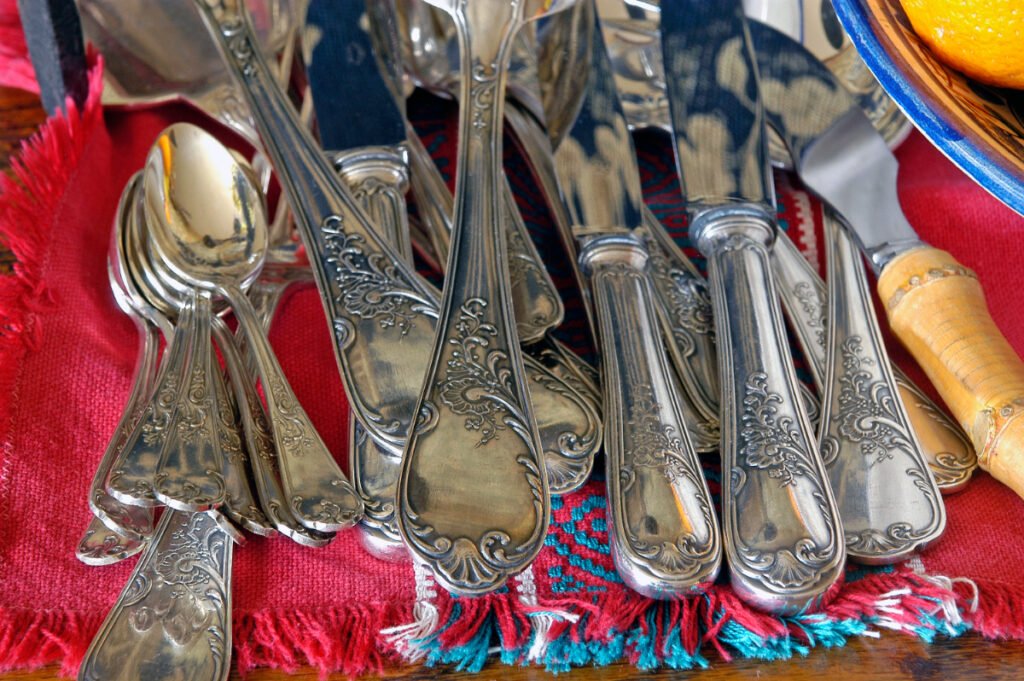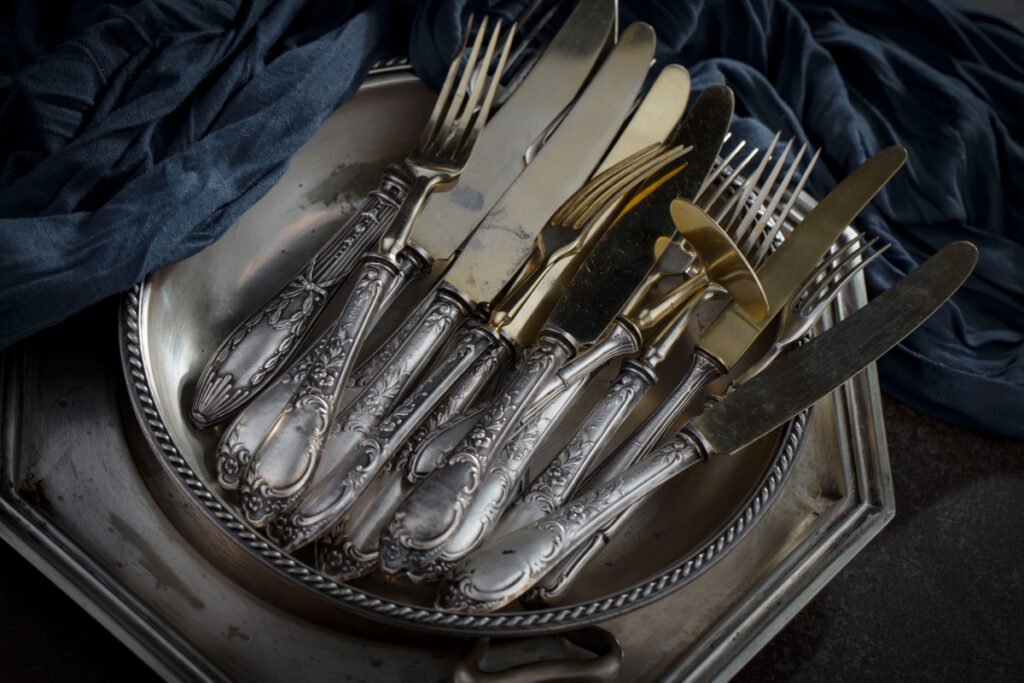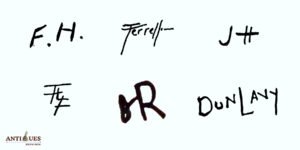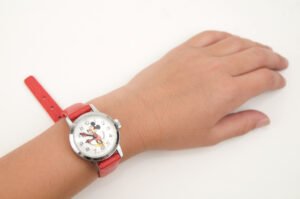Whether you are an avid collector or just an interior fanatic, you can’t deny the beauty of old flatware patterns. Embossed and etched, these are more like a play of motifs, something only old artisans could do!
And every empire and design movement invented many more new patterns over the years! So, back then, there was a huge collection! Even though these patterns literally vanished in the 1940s, they are back in fashion today!
And if you want to get that vintage flatware, valuing them becomes necessary! But is it just guesswork, or will these flatware designs help value your item? Let’s see!
Key Takeaways
- Old and rare flatware patterns like Pattern 15, Melon, or Orchid are the most valuable ones today!
- You can spot precious flatware patterns by their silver walls, intricate meshes, and scrolls. Also, look for the brand names and signs at the base!
- Most easy-to-get flatware patterns will have Acorn, Cactus, Lily, Rose, or Berry motifs. Of these, the ones with raised designs fetch good returns!
- Pick flatware patterns with Silver, Sterling Silver, or Silver-plated walls for a good value!
Key Features to Spot Vintage Flatware Patterns

Old and new flatware differs in the intricacy of its patterns. While the old patterns have engraved scenes or meshes, the new ones are plain. Also, the old designs didn’t look shiny and polished either. Instead, they had a black tarnish at the edges.
But it’s obviously not only about the visuals! Here are some more technical features to cross-verify:
- Elongated, tactile handles with floral designs, scrollwork, or political engravings
- Embossed Silver, Sterling Silver, or Plated surfaces
- Extensively contoured or tapered surfaces for better grip
- Engraved monograms or initials on the handles
- Might have double-sided designs with pointed tips
Interesting History of Flatware Patterns
In the early 1700s, English rulers ordered fancy floral and scroll tableware for themselves. But silver was rare at the time, and there were fewer tools and artisans. So, makers made basic beads and grooves on vintage spoons and forks.
Things changed in the 1800s when silver became available for everyone! Now, there was a different pattern for everything—spoons, forks, knives, etc. Also, the designs were more intricate, with crisp, white edges. Even their maker, Hester Bateman, called them ‘Bright cut patterns’ for the same!
In the 1870s, flatware featured political, floral, and geometric designs. Since these were branded and polished, they cost more! However, during the economic depression, people shifted to minimalism. So, most flatware brands switched to polished steel designs, making the old ones valuable today!
4 Types of Antique Flatware Patterns (Features & Values)
Well, there certainly are infinite flatware patterns and products out there! But all of them are just slight variations of the four types, as you see below:
1. Victorian Flatware Patterns (1830 – 1900)

Victorian flatware is the most exotic and decorated of all! Here, you’ll see different floral and animal forms with Chinese or Gothic motifs. Plus, you’ll get 90% Silver and double-sided bodies, which hike the cost to $15 – 4000.
Popular Designs: Albert, Victoria, Princess, Devonshire, and Coburg
2. Art Nouveau Patterns (1870s – 1900s)

Art Nouveau is a unique style of asymmetrical patterns, curved stems, and deep bowls. Here, you’ll also see various natural motifs like flowers, leaves, vines, and fruits. And since they have superior Sterling silver bodies and handles, a price of $20 – 4500 will be good!
Collectible Designs: Francis, Poppy & Narcissus
3. Art Deco Style (1920 – 1930s)

If your vintage flatware has stream-lined geometric or floral designs and grooves, it might be an old Art Deco pattern, costing $20 – 4000. Such patterns are very symmetrical and have shiny or embossed finishes. Plus, they’ll have metallic chrome and nickel accents too!
Top Designs: Desire, Orchid & Coronation
4. Mid-Century Modern Patterns (1940 – 1960)

Flatware patterns with machine-cut triangles, squares, and hexagons are mid-century modern patterns that cost $5 – 800. These are generally angular and often have sharp, faceted edges. You’ll also get these in teak or ebony accents!
Unique Designs: Cameo, Napa Valley & Starburst
5 Key Factors to Identify & Value Old Flatware Patterns
Any flatware pattern’s final cost changes with the brand and material, just like other antiques. So, let’s jump to those details!
1. Flatware Patterns Style
First, let’s check if your pattern’s already listed in flatware catalogs. Then just check the stamps and signs at the base and compare the values from our tables!
Acorn Motif (1915)
Just as the name says, Acorn flatware, by Georg Jensen, looks like an acorn, with its round top and tapered bottom. It’s even more curvilinear and textured than the others. Also, acorns are completely handmade. So, you can expect uneven edges, simple designs, and grooves!
How to Identify:
- Small leaf or crown embellishments at the top
- Superior Danish craftsmanship and silver meshwork
- Fine lines or cut scales at the bottom
| Acorn Motif Products | Estimated Value |
| Knives – Butter, Cheese, or Meat Cleavers | $70 – 250 |
| Dinnerware & Plates | $40 – 150 |
| Forks, Spoons & Tongs | $15 – 400, branded ones might cost up to $5000 |
Berry Flatware
Berry is a premium European pattern for all the themed lovers out there! So, it has all the regional European motifs, leaves, and vines. But it’s a bit delicate and might turn blackish with time and age.
Top Features:
- Branch-like handles with threaded edges and curved tops
- Bright and shiny satin finishes
- Might have small leaf accents at the handles
| Berry Motif Products | Estimated Cost |
| Knives & Forks | $5 – 400, branded ones might go up to $6000 too |
| Cookware – Knives & Ladles | $10 – 300 |
| Serveware – Trays & Coasters | $60 – 300 |
Rose Patterns
If you love floral flatware patterns, the rose motif will surely impress you! Unlike other multi-motif patterns, this one has a single rosebud and foliage design. Also, the motifs are more raised and embossed, making them durable and heavier.
Unique Traits:
- Stem-like handle with a curved tip and straight edge
- Might have unique vine or scroll designs on the handles
| Rose Pattern Products | Rough Cost |
| Knives – Butter, Cheese & Fruit | $10 – 200 |
| Serveware & Coasters | $5 – 200 |
| Forks, Spoons & Tongs | $10 – 300 |
Cactus Flatware (1930)
Cactus is a dotted and stippled pattern from Geog Jensen. This one’s a fun and whimsical design with gold tones, embellished flowers, and pointed tips. And since it’s for formal occasions, you’ll see shiny textured finishes, grooves, and raised seams.
Exclusive Features:
- Smooth, curved surfaces and pointed tips
- Polished stainless steel walls
| Cactus Pattern Products | Rough Cost |
| Spoons & Forks | $40 – 900 |
| Knives – Butter & Cheese | $30 – 150 |
| Ladles | $100 – 300 |
Lily
Lily’s a bit detailed with meshed florals, vines, and scrolls. Also, this one’s more curved and usually comes with a bud or floral motif at the handles.
Collectible Features:
- Superior Silver, Sterling Silver, or Gold Plated sides
- Straight edge handles with curved tips
| Lily Pattern Items | Average Value |
| Knives – Butter & Cheese | $50 – 150 |
| Spoons & Forks | $5 – 350 |
| Ladles | $40 – 300 |
Try to get American Victorian, Georgian, Colonial, or English designs for more returns.
2. Vintage Flatware Pattern Brand

Always see your flatware pattern’s branding! For this, inspect your item’s bases or internal rims and see if you get any stamped logo, sign, or brand name. Once done, estimate the price from the list below:
| Antique Flatware Brand | Prominent Patterns | Top Features | Estimated Cost |
| Tiffany & Co. | English King, Palm, Persian & Wave Edge | Life-like engravings of birds, flowers, and foliage with a shiny finish | $40 – 3000, as per the set |
| Gorham Chantilly | Buttercup, Century, Chippendale, Vine & Empire | Scroll motifs, Curved handles, and tapering tips | $30 – 2500 |
| Wallace Grande Baroque | Beaded, Repousse & Violet | Ornate motifs with scrollwork, floral motifs & scalloped edges | $15 – 1500 |
| Oneida Community | Royal, Georgian, Coronation & Hampton Court | Floral & Foliage motifs with delicate motifs and meshes | $5 – 600 |
| Reed & Barton | Francis I, Burgundy, Tara & Salem | Elaborate, Renaissance-style designs – fruits, flowers, and leaf designs | $10 – 2000 |
| International Silver Prelude | Joan of Arc, Continental & Du Barry | Clean lines, Slender handles, and Scroll motifs | $10 – 1500 |
| Towle Old Master | Candlelight, Colonial & Louis XIV | Traditional designs with decorative floral and classical designs | $20 – 1400 |
Avoid getting chipped, tarnished, or scratched flatware patterns, as they might lose their value.
3. Antique Flatware Pattern Materials

It’s not just the designs and motifs; even the pattern’s material impacts the flatware costs! For instance, it values more if it’s gold-plated or silver; but the pattern is relatively cheaper if it’s steel.
Let’s see more materials and their prices below:
| Old Flatware Materials | Top Features | Rough Value |
| Silver | Intricate embossed or engraved patterns with mesh or scrollwork designs | $50 – 6000, as per the size |
| Sterling Silver | Intricate patterns and a lustrous finish with a 92.5% alloy of Silver & Copper | $50 – 5000, as per size |
| Stainless Steel | Sleek and modern designs with clean lines and brushed finishes | $10 – 1200 |
| Pewter | Grayish finishes with simple, hammered patterns and traditional motifs | $5 – 900 |
Look for flatware patterns with a 925, E, P, B, or M hallmark for a good value.
4. Antique Flatware Patterns Age

Out of the different flatware patterns available in the antique market, the ones from the 1800s cost the most, even up to $4000. And you can identify such patterns by their silver or silver-plated walls, floral or Rococo designs, and crude joints.
Next are the pieces from the 1850s. You can spot these by their Greek designs and column-like shapes, usually costing $50 – 7000, as per the set.
The later 1900s flatware patterns are minimal! They don’t have any decorations or curved forms. Instead, they are more streamlined, bold, and stepped. But these also have standard machine finishes that lower the cost by up to $3000 for large sets.
5. Rare Flatware Patterns

If you see any signed, high-relief, abstract, or regional pattern, it’s literally a jackpot! That’s because such patterns are limited-edition, and most are rare today! So, they fetch the highest returns, even up to $20,000.
Want to know more about them? Here’s a list:
| Rare Flatware Patterns | Top Features | Last Resale Cost |
| Pattern 15 (Dirk Van Erp) | Stylized Lotus Motifs, Smooth and Curved Rods, and Stamped hallmarks at the end | $22,500 |
| Melon Pattern (Georg Jensen Serving Tray) | Stylized Melon & Vine design with lines, dots, grooves, and a textured surface | $36,000 |
| Orchid Pattern (International Silver) | Curved and textured stems with raised designs, embossed, bloomed flowers, and scrolls | $17,500 |
| Repousse (Sterling Silver Tray) | Raised Scroll and animal patterns with a slight 3-D effect | $5000 |
How Do You Clean Vintage Flatware Patterns?
Vintage silver flatware might develop a black patina or tarnish after 10 – 12 years. So just make a paste of baking soda and water, and scrub the patterns thoroughly.
Is Vintage Flatware Made From Real Silver?
Most of the vintage flatware patterns are made from Sterling Silver, which is 92% Silver and 8% base metal. Yes, you would find pure silver artifacts too, but those would be rare!
Antique Flatware patterns are certainly one of the most creative and decorative antiques out there! And even identifying them is super easy! Just check their designs and brands from our list. And if your pattern doesn’t have a brand, don’t worry! You can still value it based on age and materials!
Want more guides on similar patterns like that from vintage Corelle or Corningware patterns? Hop onto our blog, and I’ll be happy to help!
Note: This article is intended for informational, educational, and entertainment purposes only. Some images are illustrative and may not represent actual brands, products, or related entities. All trademarks, product names, brand logos, packaging, and other intellectual property referenced remain the exclusive property of their respective owners. Any brand mentions or references are provided solely for descriptive and educational context and do not imply any formal or commercial association.










